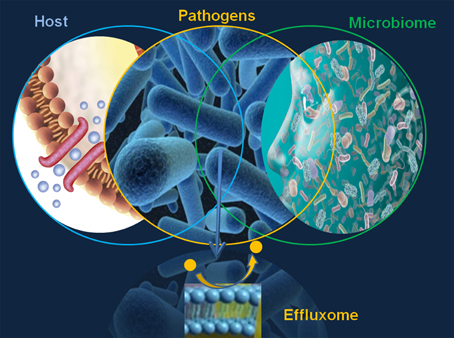Chapter 2-Host Microbe Interactions

Image from Frontiers | Defining the microbial effluxome in the content of the host-microbiome interaction (frontiersin.org) open-access article under the terms of the Creative Commons Attribution License (CC BY).
Chapter learning objectives
-
- 1. Summarize Koch’s postulates and molecular Koch’s postulates, respectively, and explain their significance and limitations
2. Explain the concept of pathogenicity (virulence) in terms of infectious and lethal dose
3. Distinguish between primary and opportunistic pathogens and identify specific examples of each
4. Summarize the stages of pathogenesis
5. Explain the roles of portals of entry and exit in the transmission of disease and identify specific examples of these portals
6. Explain how virulence factors contribute to signs and symptoms of infectious disease
7. Differentiate between endotoxins and exotoxins
8. Describe and differentiate between various types of exotoxins
9. Describe the mechanisms viruses use for adhesion and antigenic variation
10. Describe virulence factors unique to fungi and parasites
11. Compare virulence factors of fungi and bacteria
12. Explain the difference between protozoan parasites and helminths
13. Describe how helminths evade the host immune system
- 1. Summarize Koch’s postulates and molecular Koch’s postulates, respectively, and explain their significance and limitations

